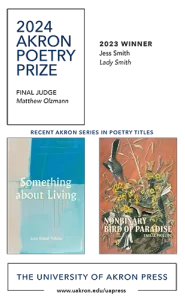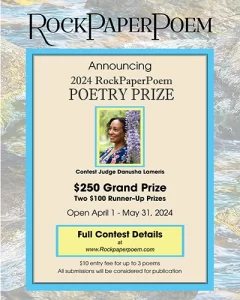Lake Effect – Spring 2010
Volume 14
Spring 2010
Annual
Bryce Magorian
Examining the inside of Lake Effect’s back cover will inform the reader of the journal’s standards. It “publishes [fiction] that emerges from character and language as much as from plot.” Always a fan of the character-driven piece, I was delighted to discover that this standard was adhered to carefully.
Examining the inside of Lake Effect’s back cover will inform the reader of the journal’s standards. It “publishes [fiction] that emerges from character and language as much as from plot.” Always a fan of the character-driven piece, I was delighted to discover that this standard was adhered to carefully.
Aimee Parkison’s “Theatrum Insectorum” features Garner, a lonely playwright for arthropods whose hobby of building stages for them to act out private dramas was brilliant. I was engaged from start to finish, attempting to puzzle out the mind of such an odd fellow. Wendell Mayo’s “The Big Healy” also deserves special mention for both the title character (an archetypal bully who attains surprising depth by the end) and the character of Maude Roller: “Maude for Maudlin, Maude for Maugham, Maude for Weeping in Bondage.”
The poetry guidelines ask for “poems that demonstrate an original voice and that use multilayered, evocative images presented in language shaped by an awareness of how words sound and how they mean.” While many featured poets accomplished this splendidly, I’ll note Darlene Pagán’s “Razbliuto.” This poem delved into the histories of words from a multitude of languages, words that both sound and mean in manifold ways. The titular word, Razbliuto, is “Russian for the feelings / you have for someone you once loved, but / now do not,” and the meanings do not stop there when it is revealed that the word did, in fact, “not exist” and was “just a root word, / razliubit, to stop loving, recorded in a long / list of urban legends.”
Lake Effect looks for literary nonfiction pieces that “engage literature in the context of a lived life.” I recognized this quality in Curtis Smith’s piece “The Borders of Diane Arbus,” in which the author’s life struggle with “the imperfect science of understanding” led him to identify with Arbus’s shutter-click worlds of “the dominatrix and her client, the protestors, the distrustful pedestrians and the group home residents.” In “a society that worships beauty and youth above all else,” Arbus’s “themes of creeping, if sometimes creepy, humanity” resonated with Smith.
I thoroughly enjoyed the majority of work in this offering from Lake Effect, which was elevated beyond the norm by fiction featuring solidly defined characters placed in worlds that highlighted their complexity, poetry that challenges its audience without being opaque, and literary nonfiction that motivates its readers to expand their own personal stories.
[www.pserie.psu.edu/academic/hss/lakeeffect/index.html]




